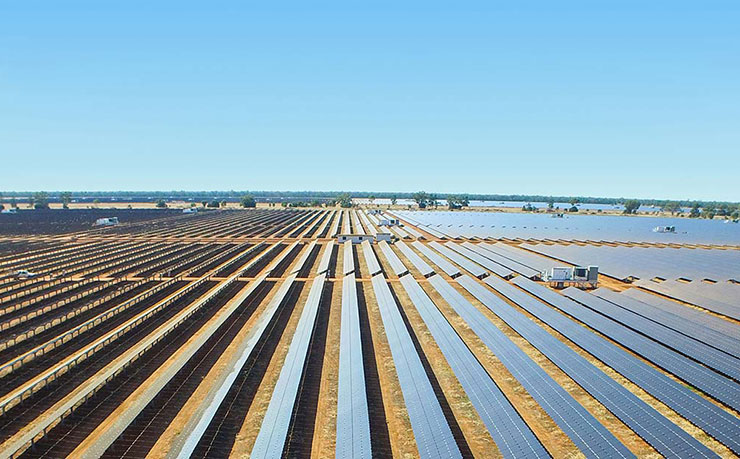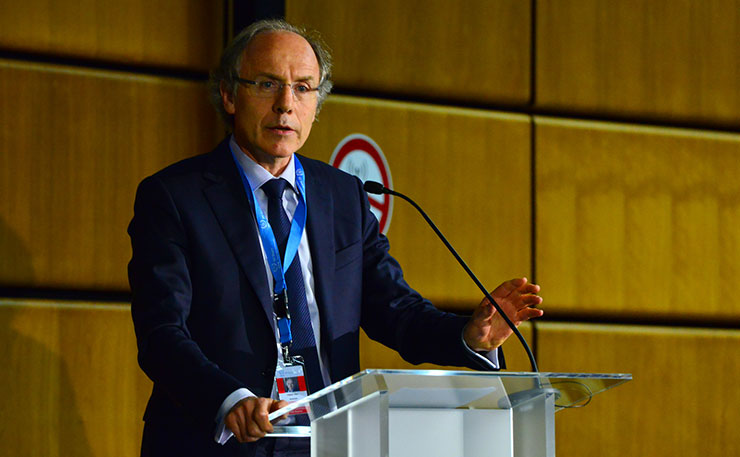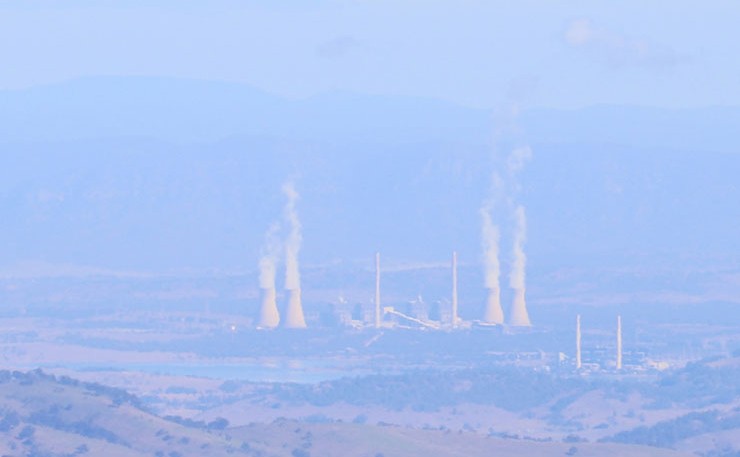In the debate over keeping the Liddle Power Station open, the numbers just don’t add up. But probably not the numbers you’re thinking. Geoff Russell explains.
According to Guy Rundle, writing last week on Crikey.com, we could build a “socially distributed [clean]energy system” (whatever that is), in a decade.
The Germans are the prototypical renewable energy zealots and they figure they’ll manage about 80 per cent of their electricity from renewables by 2050. Which is 50 years after they passed their Renewable Energy Sources Act back in 2000.
Perhaps Angela Merkel could dispatch some renewable energy guru’s to sit at Guy’s feet and learn. But perhaps renewable energy engineers are intrinsically non-dispatchable and will just have to wait for a favourable wind before visiting.
Having read Guy’s article, I went back to check his references, numbers, evidence. But apparently, this too is non-dispatchable, so I’ll need to wait until the sun comes out from behind its cloud and illuminates Guy’s reasoning.
Did anybody hear Alan Finkel on the ABC Science Show recently? Among a panel of pretty gung-ho renewable advocates, Finkel stood out by robustly urging caution and concern for the finer details and massive complexity of our energy system. His metaphor was that changing the global energy system was like turning not just the biggest supertanker you’ve ever seen, but like turning a tanker 1,000 times bigger than anything you’ve ever seen.
So let’s look at turning not the whole system, but just one little coal plant; the Liddell power station.
Liddell is a 2,000 megawatt (MW) coal fired power station. So it will deliver 2,000MW whenever you want. This is what dispatchable means; whenever you want. So you can get 2,000MW on windless evenings when solar and wind are producing nothing. You can get 2,000MW in the chilly pre-dawn of any morning when the roasters of coffee beans are preparing for the morning rush.
Before making grand claims about turning the entire Australian energy supertanker in a decade, Guy could first explain how to replace Liddell in 5 years?
Australia’s Nyngan solar farm is currently our largest, at 102MW. Is that 5 percent the size of Liddell? Would building 20 do the job?

102 solar megawatts is nothing like 102 coal megawatts. Firstly solar isn’t dispatchable and secondly, 102MW is just the maximum power produced around midday on a hot summer’s day. In the case of Nyngan, you divide by about 4 to get the average output which might be compared with a coal plant, except that the comparison would still be silly because… as I mentioned, solar isn’t dispatchable.
This difference between maximum output and average output is captured by the term capacity factor. Suppose, for example, Nyngan could operate 24×7, then it would produce 102 x 24 x 365 = 893520 megawatt-hours of energy. But it doesn’t because the sun doesn’t shine 24×7. So Nyngan will produce a much smaller amount; about 25 per cent of this maximum. This percentage, called the capacity factor varies between different solar technologies and the sunniness of the area. Rooftop solar has a capacity factor of 14-16 percent.
Taking this into account, you’d need about 80 Nyngans to generate as much electricity as Liddell can generate, assuming it was operating 24×7.
But not one of these 80 Nyngans would help you of an evening, so it actually wouldn’t matter how many you built in the next five years.
Now consider wind. What’s the capacity factor of a wind farm? Typically between 30 and 40 per cent. But, wind isn’t quite as predictable as the sun. It can be windless for days or nights in succession. What are the practical implications of this?
In practical terms there are about 30 days a year where Australia’s entire fleet of wind farms produces less than 10 percent of its maximum capacity. Note that I’m not talking about a windless event for one wind farm, but a simultaneous flat spot across our entire fleet of wind farms.
And there’s also more than 100 days where you are only getting around 20 per cent of maximum. So to get a guaranteed 2,000MW from wind on about 265 nights a year, you’d need to build about 10,000MW of wind power. And heaven help you for the other 100 nights.
South Australia has built about 1,600MW of wind power in about a decade so how hard can it be to build 10,000MW in just five years? Assuming we can do without fresh roasted coffee beans for a 100 days a year. And what about blackout risks?
Again Finkel was at pains to very gently remind his gung-ho renewable panellists and audience what his recent investigation had found:
“What we found is that the Australian electricity system, because of the changes caused by the adoption of new technology, because of policy changes, is actually under pressure. It’s not running as easily as it was previously.”
The BHP workers who spent weeks jack hammering slag solidified at the bottom of a very expensive blast furnace as a result of last September’s SA blackout must have thought that was the mother of all understatements.

South Australia had a storm last year which resulted in a loss of power generation. It happens.
There have been three other events during the past 20 years where even bigger losses of power occurred. But few people will have heard about the others because they didn’t black out the entire damn state.
The September 2016 storms have become famous because that 456MW loss of generation had a different impact from the other three even bigger problems; namely a total blackout of the entire state. The other three events involved bigger losses but no statewide blackout. Why? Finkel knows. And so does every power engineer in the country. It’s the inertia, stupid.
With traditional power systems involving large heavy spinning turbines, the loss of even large chunks of the system produces a slower response. Slow enough to allow load-shedding which prevents the whole house of cards collapsing. Current SA renewable technologies have little or no inertia and we paid the price.
But what about batteries? Won’t they solve the problem of intermittent wind and solar power? Can’t we just install some batteries with our wind farms to replace Liddell?
After all, didn’t Jay Weatherill just sign up to build the world’s biggest battery in SA? Jay’s world’s biggest battery will supply 2,000MW for zero seconds. It will supply 100MW for about an hour. Okay, then let’s just buy more of them!
Here’s the problem. If we could miraculously bring all of the world’s ‘big’ Lithium-ion batteries to Australia, the entire global fleet, they’d supply 2,000MW for all of 90 minutes. In 2020, Elon Musk’s massive Gigafactory will be complete; making half a million Lithium-ion car batteries a year. If we could reserve half of a year’s output of the Gigafactory we could backup Liddell for about 9 hours. That sounds like a Rundlesque plan, so I’ll leave it to Guy to email Musk for a quote.
Nobody wants to see Liddell keep pumping carbon dioxide into the air, but public ignorance about the extreme difficulties of shutting it down are largely a product of Guy and all the other sun-blind commentators who’ve been pushing renewable energy Kool-Aid for the past couple of decades.
Applying the term Kool-Aid to renewables was, as far as I know, first done by climate scientist James Hansen back in 2011. Hansen has been called the father of climate science and he also knows a considerable amount about energy. His 2011 article tried to explain the problems of renewables for a lay audience.
We wouldn’t tolerate other technologies with such dismal qualities, we don’t like phones cutting out, or cars, or doctors disappearing mid surgery, but renewables seem beyond criticism despite having appalling performance characteristics.
Has Hansen changed his views since 2011? Not judging by his presence at Paris (COP21) in 2015 arguing for a rapid nuclear roll-out to give the planet a fighting chance.
Guy Rundle isn’t alone in writing about stuff he hasn’t studied and knows (apparently) nothing at all about. We don’t need to lament BREXIT and the demise in the trust of expertise, or the election of Trump and elevation of the hip shot tweet into public policy, we have our very own journalistic chimps with word processors hoping to bang out a copy of Hamlet if they stick at it; or failing that, a national energy policy.
Rundle is just one of many journalists prattling on about energy systems without even bothering to learn the basics. It’s like having political journalists who haven’t heard of Parliament House and are confused about who leads which party, but are still filing daily stories.
Enough is enough.
Donate To New Matilda
New Matilda is a small, independent media outlet. We survive through reader contributions, and never losing a lawsuit. If you got something from this article, giving something back helps us to continue speaking truth to power. Every little bit counts.






